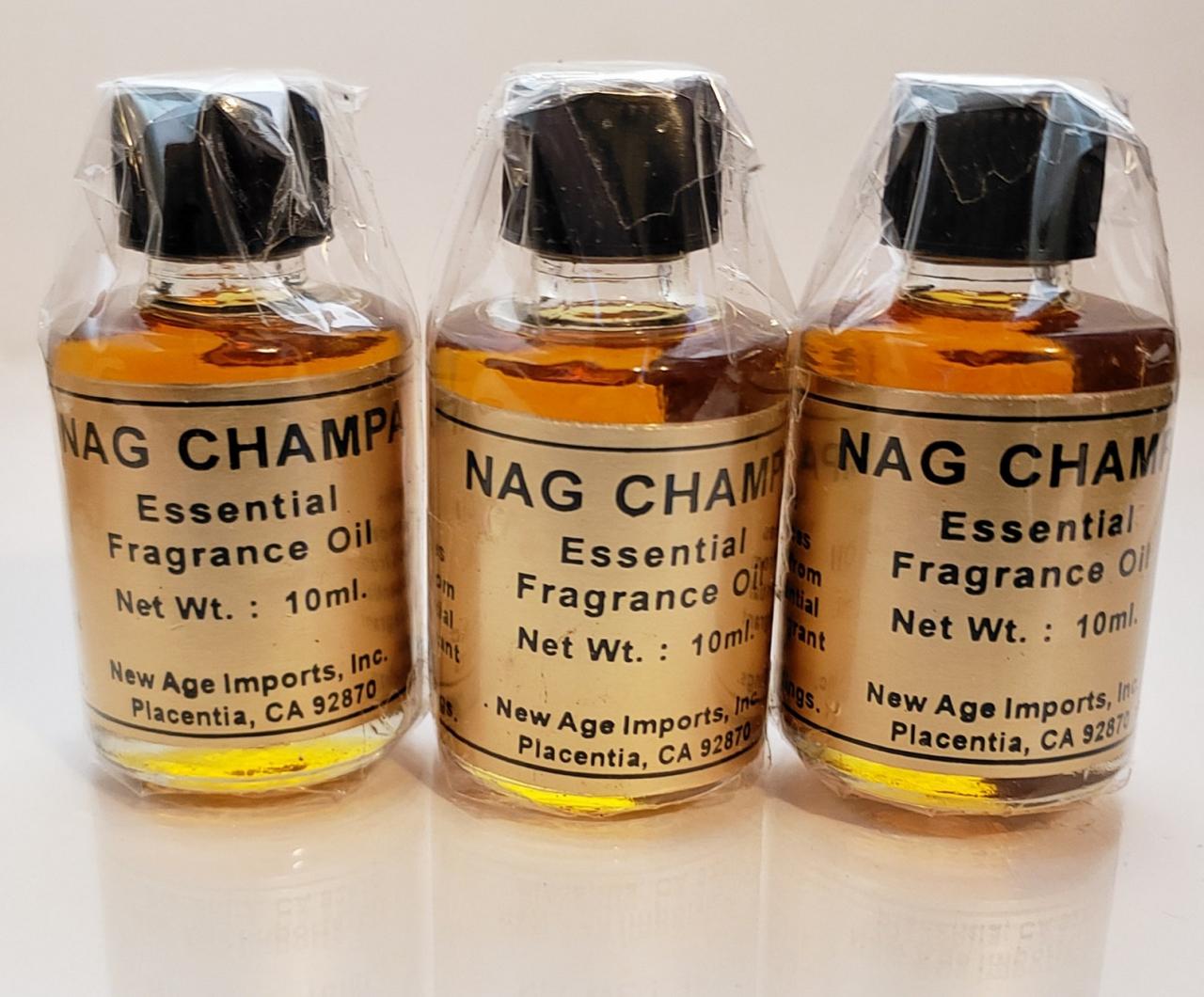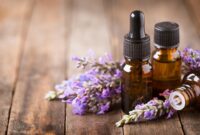Nag champa essential oil, an aromatic treasure with deep-rooted traditions, invites us to explore its enchanting allure and therapeutic benefits. Originating from the sacred forests of India, this oil has captivated senses and nurtured well-being for centuries.
With its distinct and alluring aroma, nag champa essential oil boasts a rich composition of chemical components that endow it with remarkable therapeutic properties. Its historical significance in spiritual practices and modern applications in perfumery and aromatherapy further attest to its versatility and enduring charm.
Introduction

Nag champa essential oil is a fragrant oil derived from the Champaca flower (Michelia champaca), native to India and Southeast Asia. The name “nag champa” literally means “snake flower” in Sanskrit, referring to the flower’s resemblance to a coiled serpent.The
unique aroma of nag champa oil is characterized by its sweet, floral, and slightly spicy notes. It is often used in incense, perfumes, and other aromatic products due to its calming and uplifting properties.
Origins
The Champaca flower has been prized for its fragrance for centuries, and its essential oil has been used in traditional Ayurvedic medicine for various purposes, including promoting relaxation, reducing stress, and enhancing mood.Nag champa oil is typically extracted through steam distillation of the Champaca flower petals.
The resulting oil is a viscous, pale yellow liquid with a rich and complex aroma.
Extraction and Composition
Nag champa essential oil is extracted through a process known as hydrodistillation. In this method, nag champa flowers are placed in a still with water. As the water is heated, it turns into steam, carrying the volatile compounds from the flowers.
These compounds are then condensed back into liquid form, resulting in the essential oil.
Nag champa essential oil is composed of a variety of chemical compounds, including:
- Benzyl acetate:This compound has a sweet, floral scent and is known for its calming and sedative effects.
- Linalool:This terpene alcohol has a fresh, floral scent and is known for its antibacterial and anti-inflammatory properties.
- Eugenol:This compound has a spicy, clove-like scent and is known for its analgesic and antiseptic properties.
- Alpha-pinene:This terpene has a fresh, piney scent and is known for its expectorant and decongestant properties.
- Beta-caryophyllene:This sesquiterpene has a spicy, woody scent and is known for its anti-inflammatory and analgesic properties.
Traditional Uses: Nag Champa Essential Oil
Nag champa essential oil holds immense cultural and historical significance in spiritual practices and traditional medicine. Its unique and captivating aroma has been deeply intertwined with religious ceremonies, meditation, and healing rituals for centuries.
In ancient India, nag champa oil was considered sacred and used in temple rituals and offerings. Its sweet and earthy fragrance was believed to create a spiritual atmosphere, promote tranquility, and enhance meditation.
Aromatherapy
Nag champa oil is widely employed in aromatherapy for its calming and uplifting properties. It is often diffused or applied topically to relieve stress, anxiety, and insomnia. Its sedative effects can help promote relaxation and ease the mind into a peaceful state.
Traditional Medicine, Nag champa essential oil
In traditional Ayurvedic medicine, nag champa oil is valued for its therapeutic qualities. It is used to treat a range of ailments, including headaches, muscle pain, and respiratory problems. Its anti-inflammatory and antimicrobial properties may also provide relief from skin conditions and infections.
Modern Applications

Nag champa essential oil has gained immense popularity in modern times, extending its applications beyond traditional uses.
In the realm of perfumery, nag champa oil is highly prized for its exotic and alluring aroma. Its sweet, floral notes with hints of musk and spice make it a captivating fragrance that evokes a sense of serenity and warmth.
It is often blended with other essential oils to create unique and captivating perfumes that cater to a wide range of preferences.
The cosmetic industry has also embraced nag champa oil for its therapeutic properties. Its anti-inflammatory and antibacterial qualities make it a valuable ingredient in skincare products designed to soothe and rejuvenate the skin. Nag champa oil is incorporated into lotions, creams, and serums to combat acne, reduce redness, and promote a healthy complexion.
Aromatherapy
In the realm of aromatherapy, nag champa essential oil is renowned for its calming and uplifting effects. Its soothing aroma promotes relaxation, reduces stress, and enhances meditation practices.
- Relaxation:The sweet and floral fragrance of nag champa oil creates a tranquil atmosphere, helping to calm the mind and body. It is often used in diffusers or massage oils to promote relaxation and alleviate tension.
- Meditation:Nag champa oil is a popular choice for meditation and spiritual practices. Its aroma helps to clear the mind, focus the attention, and promote a deeper connection with the inner self.
- Stress Relief:The calming effects of nag champa oil can help to reduce stress and anxiety. It is often used in aromatherapy to create a sense of peace and well-being.
Health Benefits

Nag champa oil, known for its therapeutic properties, has been used for centuries in traditional medicine. Scientific research supports its efficacy in treating various health conditions, including skin ailments, respiratory issues, and emotional well-being.
The oil’s therapeutic effects are attributed to its chemical constituents, such as alpha-pinene, beta-pinene, and linalool. These compounds possess antibacterial, antifungal, and anti-inflammatory properties, making nag champa oil a versatile remedy for a wide range of health concerns.
Skin Health
Nag champa oil has demonstrated significant benefits for skin health. Its antibacterial and antifungal properties help combat acne-causing bacteria and prevent fungal infections. The oil’s anti-inflammatory effects soothe irritated skin and reduce redness associated with eczema and psoriasis.
Additionally, nag champa oil promotes wound healing and scar reduction. Its antioxidant properties protect the skin from free radical damage, while its moisturizing qualities keep the skin hydrated and healthy.
Respiratory Issues
Nag champa oil is an effective expectorant, helping to clear congestion and mucus from the respiratory tract. Its anti-inflammatory properties reduce airway inflammation, making breathing easier. The oil’s antimicrobial effects also help combat respiratory infections.
Studies have shown that inhaling nag champa oil can improve lung function in individuals with asthma and chronic obstructive pulmonary disease (COPD).
Emotional Well-being
Nag champa oil has calming and sedative effects on the nervous system. Its aroma is believed to promote relaxation, reduce stress, and alleviate anxiety.
The oil’s antidepressant properties have been attributed to its ability to increase serotonin levels in the brain. Serotonin is a neurotransmitter associated with mood regulation and well-being.
Safety Considerations
Nag champa oil is generally considered safe for topical and aromatherapy applications when used as directed. However, as with any essential oil, certain precautions and contraindications should be observed to ensure safe usage.
It’s important to note that nag champa oil is highly concentrated and should always be diluted before use. Undiluted application can lead to skin irritation or allergic reactions.
Potential Risks and Contraindications
- Pregnancy and Breastfeeding:Nag champa oil should not be used during pregnancy or breastfeeding as its safety has not been established for these populations.
- Skin Sensitivity:Some individuals may experience skin irritation or allergic reactions to nag champa oil. A patch test on a small area of skin is recommended before using it more widely.
- Respiratory Issues:Inhaling nag champa oil in high concentrations can irritate the respiratory tract, especially for individuals with asthma or other respiratory conditions.
- Drug Interactions:Nag champa oil may interact with certain medications, such as blood thinners and sedatives. Consult a healthcare professional before using it if you are taking any medications.
Safe Usage Guidelines
- Topical Use:Dilute nag champa oil with a carrier oil, such as jojoba or coconut oil, before applying it to the skin. A dilution ratio of 2-3% is recommended for most applications.
- Aromatherapy:Use nag champa oil in a diffuser or vaporizer. Add a few drops to the water and disperse it into the air. Avoid using it for extended periods or in high concentrations.
- Internal Use:Nag champa oil should not be ingested or taken internally.
Conclusion
Nag champa essential oil, derived from the Champaca flower, stands out for its unique fragrance and versatility. Its composition, rich in sesquiterpenes and esters, imparts a sweet, floral aroma with earthy undertones. Traditionally used in religious ceremonies and aromatherapy, nag champa has gained recognition in modern applications for its potential therapeutic benefits.From
its calming effects on the mind to its antibacterial and anti-inflammatory properties, nag champa essential oil offers a wide range of potential health benefits. It is particularly notable for its ability to reduce stress, improve sleep quality, and boost mood.
Additionally, its antiseptic and antioxidant properties make it a valuable ingredient in skincare and hair care products.While generally safe for use, precautions should be taken to avoid skin irritation or allergic reactions. It is recommended to dilute nag champa essential oil with a carrier oil before topical application and to avoid ingestion.Overall,
nag champa essential oil is a versatile and beneficial essential oil with a rich history and promising applications. Its unique fragrance, therapeutic properties, and safety make it a valuable addition to any aromatherapy or natural remedy kit.
Ultimate Conclusion
In essence, nag champa essential oil stands as a testament to the enduring power of nature’s aromatic gifts. Its unique fragrance, therapeutic potential, and cultural significance make it a captivating subject that continues to inspire and enchant.
Helpful Answers
What is the extraction process of nag champa essential oil?
Nag champa essential oil is extracted through a process known as hydro-distillation, where steam is passed through the flowers and leaves of the nag champa plant, releasing the volatile compounds that make up the oil.
What are the key chemical components of nag champa essential oil?
The primary chemical components of nag champa essential oil include alpha-pinene, beta-pinene, and caryophyllene, which contribute to its characteristic aroma and therapeutic properties.
How can nag champa essential oil be used in aromatherapy?
Nag champa essential oil can be diffused or inhaled directly to promote relaxation, reduce stress, and enhance meditation practices.
What are the potential health benefits of nag champa essential oil?
Nag champa essential oil has been traditionally used to alleviate skin conditions, respiratory issues, and emotional imbalances. However, scientific research is still ongoing to fully establish its therapeutic efficacy.


